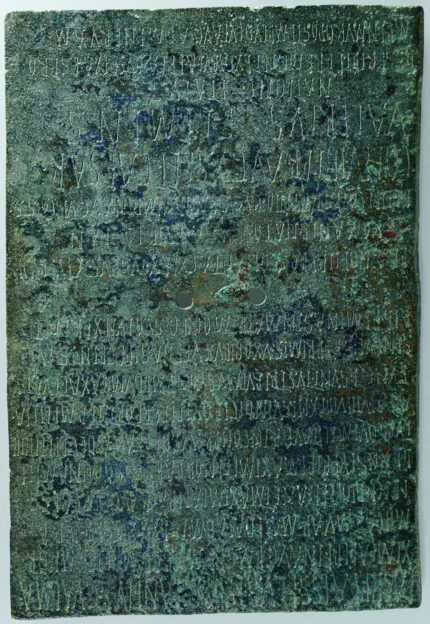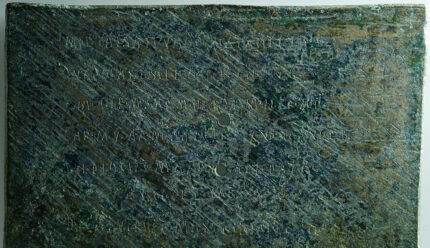 A unique 4th century Roman military diploma of a Praetorian Guard will be the centerpiece of a new exhibition at the Maremma Archaeological and Art Museum in Grosseto, Tuscany.
A unique 4th century Roman military diploma of a Praetorian Guard will be the centerpiece of a new exhibition at the Maremma Archaeological and Art Museum in Grosseto, Tuscany.
The diploma was discovered in 1958 near the town of Poggio Rotigli outside Grosseto. The two bronze tablets were brought to the surface during ploughing work. Despite their encounter with heavy machinery, the tablets were in excellent condition, and all four sides of them were inscribed with the inscriptions fully legible. They were immediately recognized as a highly significant epigraphic record of a member of the Praetorian Guard who was likely from the Maremma region of Italy.
Roman soldiers were issued diplomas at the end of 25 years of military service as attestations of their legal discharge from the army and the rights conferred to them, namely Roman citizenship, the right to marry, the legitimization of any children they may have fathered before being legally married, and the conferring of citizenship on said children.
 The Poggio Rotigli military diploma belonged to one Valerius Clemens, described in the inscription as an Italian national who was discharged from the Ninth Praetorian Cohort on January 7th, 306 A.D. The early 4th century date makes this the most recent Roman military diploma known.
The Poggio Rotigli military diploma belonged to one Valerius Clemens, described in the inscription as an Italian national who was discharged from the Ninth Praetorian Cohort on January 7th, 306 A.D. The early 4th century date makes this the most recent Roman military diploma known.
It consists of two rectangular tablets, one larger and thicker than t he other, with two holes pierced through the center. The tablets were originally tied together with a cord passed through the holes and then sealed with a lead or tin seal. This sealing system kept the interior inscriptions of the tablets private and prevented them from being fraudulently duplicated without breaking the seal.
he other, with two holes pierced through the center. The tablets were originally tied together with a cord passed through the holes and then sealed with a lead or tin seal. This sealing system kept the interior inscriptions of the tablets private and prevented them from being fraudulently duplicated without breaking the seal.
The long inscription includes the names and many, many titles of emperors Flavius Valerius Constantius (Constantius Chlorus, r. 305-306, father of Constantine the Graet) and Galerius Valerius Maximianus (Galerius, r. 305-311), their predecessors Diocletian (r. 284-305) and Maximian (r. 286-305) and the Caesars Flavius Severus (Caesar from 305-306) and Maximinus Daza (Caesar from 305-310).
The new museum exhibition will be an immersive experience for visitors.
The diploma, which at the end of the exhibition will be permanently included in the collection of our museum, will be visible until January 21, 2024 in an evocative setup where, thanks to the videomapping technique, some significant passages of the text will be projected onto the walls of the immersive room while a narrator will tell the story and life of the praetorian Valerius Clement.
Finally, in the multimedia room, it will be possible to listen to a video interview with the direct testimony of those who, back in 1958, made the discovery of the precious document.
The “right to legitimize any children they may have fathered before being legally married, and the conferring of citizenship on said children”? 🤨️
Tiberius Julius Abdes Pantera from Sidon (ca. 22BC – ca. 40AD near Bingen) at the age of 62 was laid to rest in Germany: “Tib Iul Abdes Pantera Sidonia ann LXII stipen XXXX miles exs coh I sagittariorum h s e”, and here, the “Dementi” to Celsus (Κέλσος) by Origen of Alexandria is maybe a bit …”overspecific”.